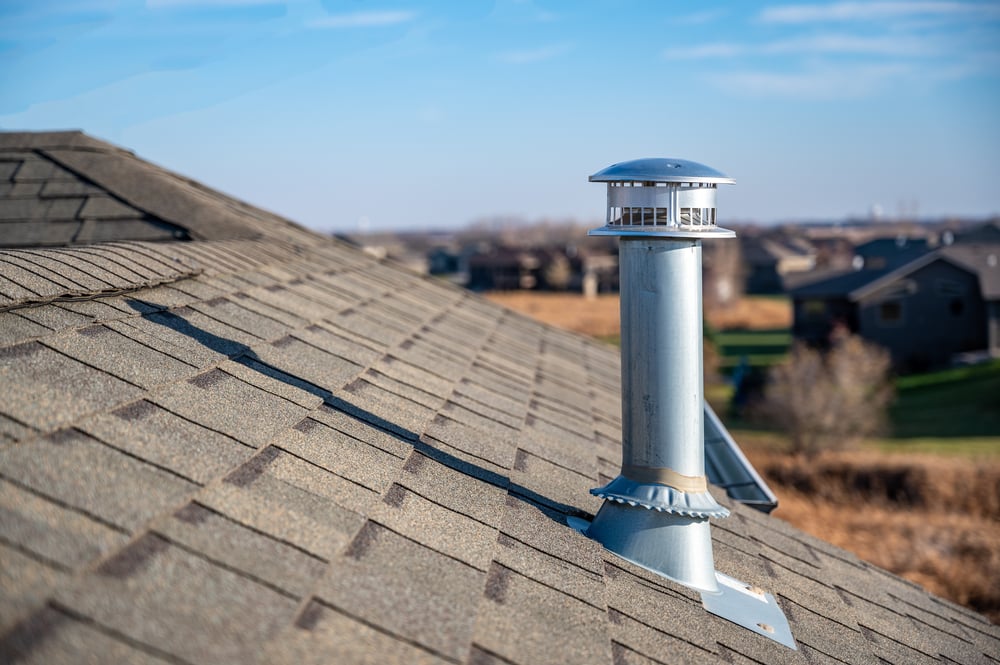Why Adequate Ventilation in Plumbing Systems
Why Adequate Ventilation in Plumbing Systems
Blog Article
How do you feel in relation to Essential Plumbing Vent Pipes: Understanding Their Role?

Appropriate ventilation in pipes systems is often forgotten, yet it is crucial for keeping the capability and safety of your home's plumbing. Ventilation assists manage air pressure, prevent the build-up of dangerous gases, and make certain the effective removal of waste. In this guide, we will certainly check out the importance of correct pipes ventilation, just how it functions, and the benefits it gives your plumbing system.
How Ventilation Works in Pipes Systems
Air Pressure Regulation
Correct air flow maintains balanced atmospheric pressure within the plumbing system. When water moves through pipes, it displaces air. Without ample ventilation, this displacement can develop negative pressure, bring about slow drains or siphoning of water from catches, which can create unpleasant odors to leak into the home.
Stopping Sewer Gas Buildup
One of the most important functions of plumbing vents is to avoid sewer gases, such as methane and hydrogen sulfide, from building up within the home. These gases can pose serious health and wellness risks and are extremely combustible. Vent pipes allow these gases to leave safely outside.
Helping in Waste Elimination
Air flow assists in the reliable removal of wastewater by stopping airlocks in the drain system. When air can move freely via the vents, it permits water and waste to stream smoothly via the pipelines, lowering the danger of obstructions and backups.
Benefits of Proper Air Flow
Boosted System Performance
Appropriately ventilated plumbing systems run a lot more effectively, with fewer obstructions, faster draining pipes, and less strain on the pipelines. This effectiveness expands the lifespan of the pipes system.
Improved Air Top Quality
By preventing sewage system gases from entering your home, appropriate ventilation adds to much better indoor air quality, making your living setting healthier and more comfortable.
Protecting Against Water Damages
Adequate ventilation assists prevent water from being siphoned out of catches, which can lead to sewer gases going into the home and triggering water damages with time.
Steps to Guarantee Correct Ventilation
Consulting Plumbing Codes
Always get in touch with local plumbing codes when developing or changing your pipes system. These codes supply the essential standards for proper venting and ensure your system satisfies safety criteria.
Routine Inspection and Upkeep
Routine examinations can aid recognize potential air flow problems before they end up being significant problems. Maintenance jobs, such as cleansing air vent pipelines and checking for blockages, are crucial for maintaining the system in good working order.
Specialist Setup
For new installments or significant alterations, it's important to hire a specialist plumbing technician. They have the expertise to make certain the air flow system is properly created and installed according to code.
Comprehending Air Flow in Pipes
Ventilation in pipes refers to the network of pipes that allow air to move via the water drainage system. These vents serve multiple objectives, consisting of managing atmospheric pressure within the pipes, avoiding sewer gases from going into the home, and assisting in the smooth circulation of wastewater.
Kinds Of Plumbing Vents
Key Stack Vent
The major pile air vent, also known as the air vent pile, is the primary air vent in a pipes system. It extends from the main drain align through the roofing system, allowing gases to escape and fresh air to go into the system.
Branch Vent
Branch vents connect to the main stack vent and serve individual fixtures, such as sinks, bathrooms, and showers. These vents make certain that each fixture has ample ventilation to function appropriately.
Air Admittance Valve (AAV).
An Air Admittance Valve (AAV) is a one-way valve that enables air to go into the plumbing system without the need for a typical vent pipeline expanding via the roof. AAVs are generally used in improvements or locations where setting up a standard vent is unwise.
Indicators of Poor Ventilation in Plumbing.
Slow Draining Fixtures.
If your sinks, bathtubs, or toilets are draining pipes slowly, it could be an indicator of bad ventilation. Poor air circulation can produce a vacuum cleaner result, making it challenging for water to drain properly.
Gurgling Seems.
Gurgling noises coming from drains pipes are frequently a result of air being drawn via water catches as a result of adverse pressure in the pipes. This is a clear indicator of insufficient air flow.
Undesirable Smells.
Sewage system smells inside your home are a red flag that your pipes system is not effectively aerated. This could imply that sewer gases are not being effectively vented outside, causing possibly hazardous problems.
Usual Air Flow Errors.
Inadequate Vent Sizing.
Using undersized air vent pipes can cause poor air circulation and pressure imbalances in the system. It's vital to utilize vents that fulfill the certain needs of your plumbing system.
Improper Vent Placement.
Putting vents also much from the fixtures they offer can decrease their performance. Correct positioning makes sure that air can flow easily and efficiently through the system.
Ignoring Code Needs.
Building regulations provide particular standards for pipes air flow. Overlooking these codes can result in a system that stops working to operate correctly and may bring about costly repairs or carcinogen.
Final thought.
Appropriate ventilation is a vital part of any type of plumbing system, guaranteeing that it operates efficiently and securely. By understanding the relevance of air flow, identifying the indicators of inadequate air flow, and taking actions to preserve your system, you can protect against expensive problems and safeguard your home's air quality.
4 Things You Should Know About Your Plumbing Vents
What Plumbing Vents Are
Also called a vent stack, a plumbing vent is a vertical pipe attached to your drain line that runs through your roof. The plumbing vent pipe, or plumbing air vent, removes gas and odors from your plumbing system and allows fresh air to enter the pipes, helping the water to flow out of the drain pipes.
What Plumbing Vents Do
Plumbing vents have two basic functions. One of which is to allow unpleasant smelling wastewater and sewer gasses to escape your plumbing system instead of entering your home. Plumbing vent pipes are typically located on roofs, away from windows, to ensure the fumes exit the home completely.
The other function of the plumbing vent is to move fresh air into your plumbing system. This helps move water through every plumbing fixture in your house, like toilets and sink drains. Think of the way in which you need to let a little air into the bottle as you pour soda in order to make the drink flow smoothly.
Different Types of Plumbing Vents
True vent: This is the most common vent option. In simplest terms, a true vent is a vertical pipe attached to your drain line that exits through the roof. They often function as the main vent that other fixtures can connect to. Re-vent pipe or auxiliary vent: Attached to the drain line near specific plumbing fixtures, re-vent pipes run up and over to connect to the main vent. Common vent: Two plumbing fixtures installed on opposite sides of a wall are typically tied into the vent stack using something known as a sanitary cross. Wet vent: This venting option operates as a drain pipe and a vent at the same time. Wet vent drainage systems drain water from one fixture while venting the air from another. Although they’ve been used for over 100 years, wet vent systems have only recently been added to the plumbing code in many areas. If you’re planning on installing one in a bathroom remodel, make sure you check your local code prior to construction. Loop vent: For free-standing fixtures like kitchen island sinks, loop vents are ideal. These vent pipes run under the floor, rise from the P-trap, and create a loop inside the cabinet sink. Air admittance valve: An AAV is a one-way mechanical valve typically installed at the site of the plumbing fixture. AAVs allow venting to occur without having to tie into a larger venting system. They’re ideal for venting fixtures where you aren’t able to easily connect to an existing vent system. Common Plumbing Vent Issues
Although vent pipes typically don’t have water flowing through them, they’re still subject to many typical plumbing issues. For example, clogs are one of the most common problems associated with sewer vent pipes. If your vent pipe gets clogged, all of your plumbing fixtures tied into the vent stack will be affected.
A sink with a slow drain that bubbles and gurgles or a strong sewage smell around your toilet are both indicators that your toilet vent pipe is clogged. Because most vent pipes exit through the roof, old leaves, twigs or even a bird’s nest could be clogging the pipe.
Clogs in your vent pipe system cause a buildup of negative pressure, meaning that water won’t be able to flow out of your home very well. It’s similar to putting your finger over the opening of a straw to trap water inside. When you remove your finger, the water is able to flow out of the straw.
If you suspect you have any blockage in your vent, make sure you have a professional come examine the situation. Left unchecked, a blocked air vent can lead to other costly repairs, like leaks and sediment buildup.
Under Pressure
Pipe vents are essential aspects of a home’s plumbing system. Owning a home means learning about all sorts of things you never put much thought into before. But by understanding as much as you can about the important systems of your home, you can keep those budgets intact and those anxiety levels low.
https://www.homeserve.com/en-us/blog/home-improvement/plumbing-vents/

I'm just very interested by What Is A Plumbing Vent & How Do They Work? and I really hope you enjoyed the blog post. Do you know about someone else who is very much interested in the topic? Do not hesitate to share it. Thanks for being here. Kindly stop by our site back soon.
This Post Report this page